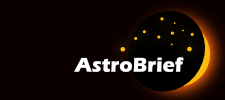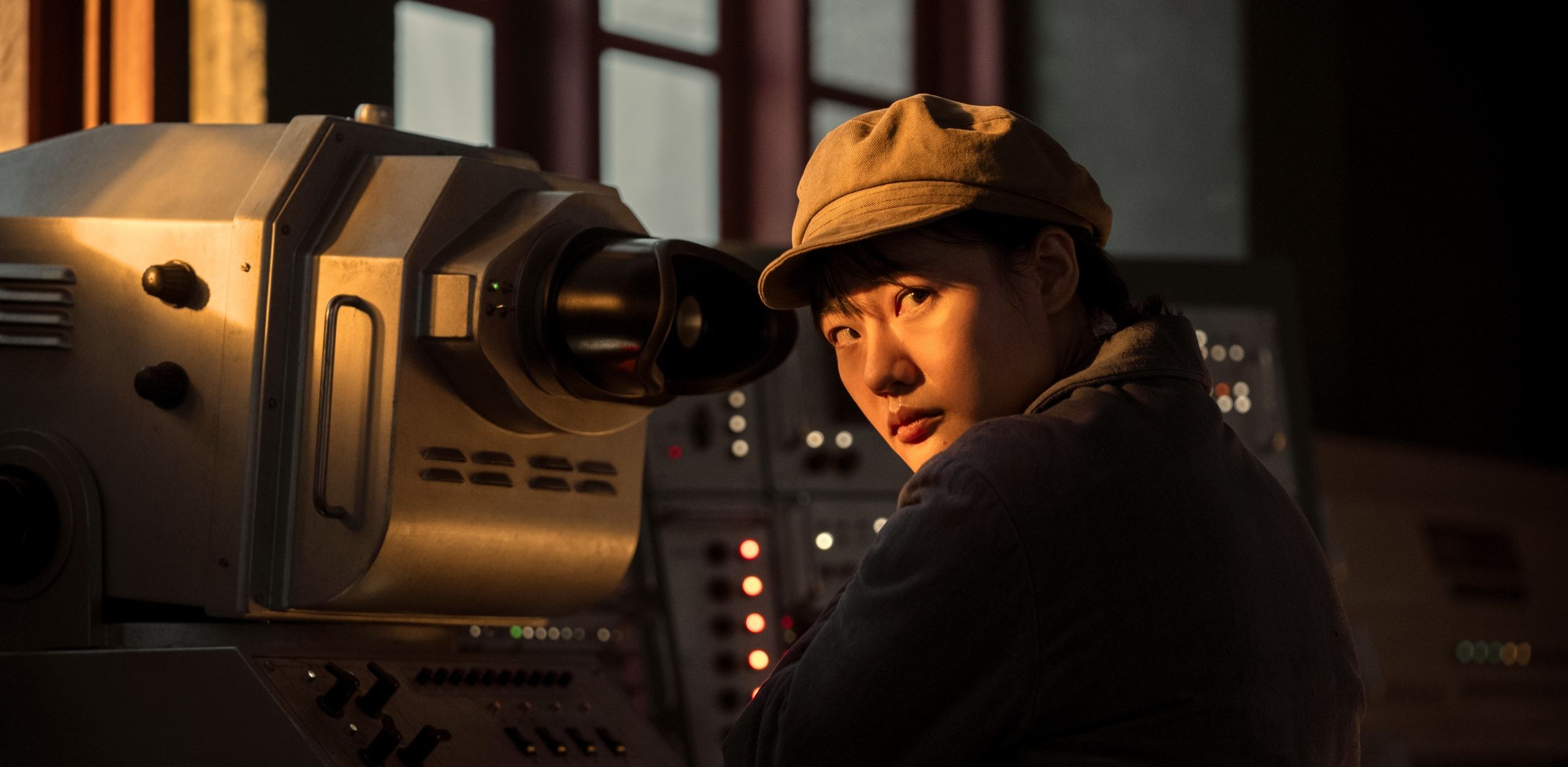Fortunately, the real-world search for signs of extraterrestrial civilizations doesn’t have to deal with an alien armada like the one that’s on its way to Earth in “3 Body Problem,” the Netflix streaming series based on Chinese sci-fi author Cixin Liu’s award-winning novels. But the trajectory of the search can have almost as many twists and turns as a curvature-drive trip from the fictional San-Ti star system.
Take the Breakthrough Initiatives, for example: Back in 2016, the effort’s billionaire founder, Yuri Milner, teamed up with physicist Stephen Hawking to announce a $100 million project to send a swarm of nanoprobes through the Alpha Centauri star system, powered by light sails. The concept, dubbed Breakthrough Starshot, was similar to the space-sail swarm envisioned in Liu’s books — but with the propulsion provided by powerful lasers rather than nuclear bombs.
Today, the Breakthrough Initiatives is focusing on projects closer to home. In addition to the millions of dollars it’s spending to support the search for radio or optical signals from distant planetary systems, it’s working with partners on a miniaturized space telescope to identify planets around Alpha Centauri, a radio telescope that could someday be built on the far side of the moon, and a low-cost mission to look for traces of life within the clouds of Venus.

Breakthrough Starshot, however, is on hold. “This looks to be quite feasible. However, it seems to be something that is still pretty, pretty expensive, and probably wouldn’t be feasible until later in the century,” says Pete Worden, executive director of the Breakthrough Initiatives. “So, we’ve put that on hold for a period of time to try to look at, are there near-term applications of this technology, which there may be.”
Worden provides a status report on the search for extraterrestrial intelligence — and sorts out science fact from science fiction — on the latest episode of the Fiction Science podcast.
“3 Body Problem” takes its name from a longstanding challenge in orbital mechanics: It’s devilishly difficult to predict the gravitational interactions of three massive bodies in a system, except in some special cases. In the Netflix series, and in the books on which the series is based, a Chinese radio astronomer makes contact with an alien civilization that suffers repeated crises because its home world is in an unstable triple-star system.
When the aliens learn of our existence, they set out on a 400-year mass migration to Earth — an onslaught that puts our own planet on edge. One of the key concepts in the book is the Dark Forest Theory. That’s the idea that civilizations shouldn’t broadcast their existence to the rest of the galaxy, for fear that other denizens of the “Dark Forest” will eventually come after them.
Worden admits that the Dark Forest Theory has had an effect on the Breakthrough Initiatives’ agenda.
“We initially had a program called Breakthrough Message. … Not that we were going to send anything, but we were going to think about it,” he recalls. “We got a lot of resistance to even thinking about sending messages. Interestingly enough, one of the key skeptics of this was Professor Stephen Hawking. He thought it was a bad idea for exactly the Dark Forest reason. Conversely, the chairman of our advisory committee — Lord Martin Rees, the Astronomer Royal of the U.K. — has the opposite view. He doesn’t think that’s a big issue.”
Worden’s personal view is that we’ve been sending out signs of our presence — ranging from radio transmissions to telltale pollutants in the atmosphere — for so long that “it’s probably too late to hide in the forest and be quiet.”
The Breakthrough Initiatives is counting on civilizations in other planetary systems to speak up, one way or the other. Starting in 2015, Breakthrough Listen has provided support for programs looking for radio signals or optical flashes that might have been transmitted by aliens. One signal in particular, known as BLC1, got hearts beating faster in 2019 — but astronomers eventually traced its origin to earthly radio interference rather than Proxima Centauri.
Another initiative, known as Breakthrough Watch, is working with Australian astronomers on a space telescope that would monitor the motions of the three stars in the Alpha Centauri system, looking for ever-so-slight gravitational wobbles that could point to the presence of Earthlike planets a little more than 4 light-years from Earth. The telescope is called TOLIMAN, which is the Arabic name for Alpha Centauri as well as an acronym for “Telescope for Orbit Locus Interferometric Monitoring of our Astronomical Neighborhood.”
Worden says launch is currently scheduled for the first half of 2025. “We’re still negotiating on the launch vehicles, but it’s most likely to be a piggyback mission, possibly on a SpaceX mission.” he says.
For what it’s worth, astronomers have already detected a super-Earth that’s orbiting Proxima Centauri — and in 2021, a team supported by Breakthrough Watch reported seeing tentative signs of a giant planet around Alpha Centauri A.
Meanwhile, Worden is working with CSIRO, the Australian government’s science agency, on a different sort of telescope.
“We think we can put a radio telescope for on the order of $100 million on the far side of the moon that looks for transients across the broad spectrum, mostly at higher frequencies,” he says. “That’s a good place, because right now it’s blocked from interference from the Earth. Just virtually everything you see is going to be something interesting.”
The Breakthrough team is also interested in extraterrestrial life in our own solar system: Years ago, Yuri Milner looked into the prospects for sending a probe to Enceladus, an icy moon of Saturn that may harbor hidden seas and perhaps even marine organisms. Today, Worden and his colleagues are collaborating with other interested parties — including Schmidt Sciences, researchers at MIT and engineers at Rocket Lab — to send a probe through Venus’ atmosphere to search for organic materials. Liftoff is set for as early as next January.
Getting to other stars
Even though Starshot is on hold, Worden is still thinking about interstellar travel, and he’s not the only one. Last weekend, SpaceX founder Elon Musk referred to the prospects of sending his company’s Starship super-rocket on trips beyond the moon and Mars.
“This Starship is designed to traverse our entire solar system and beyond to the cloud of objects surrounding us,” Musk said in a posting to X / Twitter, his social media platform. “A future Starship, much larger and more advanced, will travel to other star systems.”
Musk may not be thinking about using light sails, but NASA is. One of the proposals that won funding in the latest round of NASA Advance Innovative Concepts grants envisions developing swarms of sail-equipped, laser-propelled micro-probes that would take advantage of the same principle laid out by Breakthrough Starshot to get to the Alpha Centauri system.
Light sails are likely to start out being used for trips to far-out destinations in the solar system. Japan’s space agency tested a solar sail during an experiment in 2010 that sent the spacecraft on a flyby past Venus — and looked into a follow-up mission to a group of asteroids in Jupiter’s orbit. That idea was put on hold, but Japanese scientists are considering other missions that would use solar power sails.

Worden thinks the best long-term approach to interstellar travel would be a combination of light sails to get the probes where they’re going, plus fusion power to slow them down once they get there. “I think that ultimately, something along that line is probably feasible in a century or so, maybe sooner,” he says.
A century may sound like a long time, but when you’re talking about sending probes to other stars, you have to adjust your time scales. After all, even the super-advanced aliens in “3 Body Problem” need 400 years to get to Earth. You can add interstellar travel to the other multi-generational challenges that are facing humanity, such as climate change. In fact, The New Yorker’s review of “3 Body Problem” notes that the approach of the aliens serves as “an unexpectedly potent metaphor for the looming perils of climate change.”
So, how long could it be before we connect with extraterrestrial civilizations? That’s the kind of question that can get alien-hunters in trouble. Two decades ago, the SETI Institute’s Seth Shostak speculated that we were likely to pick up signals from intelligent alien life by the year 2025 — a scenario that now seems extremely unlikely.
Worden prefers to think in terms of percentages.
“Within a decade, we’ll almost assuredly find life elsewhere,” he says. “We’ll probably find a life-bearing planet nearby. We’ll find life either on Mars, or Venus, or maybe the outer solar system moons. But an alien techno-civilization? I’d say, for any given decade, it’s probably a few percent. But if you don’t look, you don’t find it.”
It doesn’t bother him that he may not be around to answer one of life’s ultimate questions. “One of the cool things about science is that the journey is the fun part, and you never know what you’re going to find,” Worden says. “So, as a scientist, to me, you’re pursuing something that is unlikely, but really fundamental to our future. It’s the most fun thing I can imagine working on.”
If the aliens ever do arrive, let’s hope they find that oh-so-human trait endearing.
Take a look at the original version of this posting on Cosmic Log to get Worden’s recommendations for science-fiction stories about alien contact. Check out the Breakthrough Initiatives website to learn more about what Worden and his colleagues are up to, and tune into “3 Body Problem” on Netflix. There’s also a Chinese adaptation of Liu’s books, titled “Three-Body,” that’s available in the U.S. via PBS, Peacock, Amazon Prime and other streaming services.
My co-host for the Fiction Science podcast is Dominica Phetteplace, an award-winning writer who is a graduate of the Clarion West Writers Workshop and lives in San Francisco. To learn more about Phetteplace, visit her website, DominicaPhetteplace.com, and read “The Ghosts of Mars,” her novella in Asimov’s Science Fiction magazine.
Stay tuned for future episodes of the Fiction Science podcast via Apple, Google, Overcast, Spotify, Player.fm, Pocket Casts and Radio Public. If you like Fiction Science, please rate the podcast and subscribe to get alerts for future episodes.

